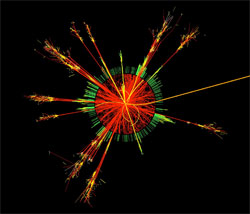

I plugged an Akai LP25 keyboard into my laptop's USB port, then I opened the ALSA MIDI panel in QJackCtl to connect the LP25 to a SuperCollider MIDI input port. classes/my-quark Unix style tildes (/supercollider/quarks/my-quark).
#Supercollider quarks install#
Installing quarks using the GUI You can install Quarks using the interface: Quarks. Name of a quark that is listed in the directory, or the url of a git repository. The Quarks class manages downloading these packages and installing or uninstalling them. The example also introduces a more complex SynthDef, with a gate value added for constructing an envelope to shape the audio output for each note played, similar to the example above. Quarks are packages of SuperCollider code containing classes, extension methods, documentation and server UGen plugins. The next example takes our little sine-wave synthesizer and puts it under MIDI control. SuperCollider comes with a utility called Quarks that lets you browse the index of community contributed packages and install them. A Quark is a package of SuperCollidercode containing classes, extension methods, documentation and server UGen plugins. zip fileDownload this project as a tar.gz file.
#Supercollider quarks how to#
She might get even more interested when she learns how to create a GUI for triggering this Task, but before we get further into SuperCollider's GUI capabilities let's look at its MIDI connectivity. SuperCollider Quarks Quarks are packages for the Super Collider music language Overview Repositories Projects Packages People Pinned quarks Public Directory of community contributed Quarks for SuperCollider 112 66 Repositories quarks Public Directory of community contributed Quarks for SuperCollider 112 GPL-2. Directory of community contributed Quarks for SuperCollider. Now things are looking a lot more interesting to our composer, especially when she starts figuring out how to apply randomization to other variables, e.g.

When the Task is evaluated the synth named Randy will be played 16 times, each time at a different frequency, with half a second between notes. We'll employ the services of a SuperCollider Quark called AutoGui to make things easy for us novices : a = SynthDef(\sinetest, ).send(s) // Send the definition to the server. Let's add a simple GUI to control the synthesizer. Now let's make things a little more interesting by adding a little randomization, a neat GUI, and some MIDI control. In the first part of this series I introduced SuperCollider3 and its most basic operations.


 0 kommentar(er)
0 kommentar(er)
